Rheumatoid Arthritis Questions Answered

Rheumatoid arthritis affects nearly 1.5 million people in the United States and thousands of people on the Mississippi Gulf Coast. On this Rheumatoid Arthritis Awareness Day, we spoke with board-certified rheumatologist Beth Lindsey, DO, about the symptoms, diagnosis, and treatment of this complex disease.

Beth Lindsey, DO
Board Certified Internal Medicine Physician and RheumatologistDr. Beth Lindsey is board certified in Internal Medicine and Rheumatology by the American Osteopathic Association. She received her DO from the Kentucky College of Osteopathic Medicine. Her journey in medicine continued with a residency in Internal Medicine at Magnolia Regional Health Center in Corinth, followed by a Rheumatology Fellowship at the University of Mississippi Medical Center.
Dr. Lindsey is a leader in Mississippi’s medical community, serving on the boards of the Mississippi Arthritis and Rheumatism Society and the Mississippi Osteopathic Medical Association.
Jump to a rheumatoid arthritis (RA) topic:
Q: What is rheumatoid arthritis?
Rheumatoid arthritis is an autoimmune disease, and autoimmune disease simply means that your immune cells are attacking the body in some way when they shouldn’t be.
Rheumatoid arthritis is one of the more common autoimmune diseases we see where the immune cells attack the joints. It can involve other organs but primarily causes inflammation and damage in the joints.
Q: How is rheumatoid arthritis different from other types of arthritis?
Rheumatoid arthritis is different from other types of arthritis in that it causes excessive inflammation. The most common arthritis otherwise is osteoarthritis, and those are the two main types of arthritis we try to differentiate. One is inflammatory, one is non-inflammatory. Rheumatoid arthritis is the one that causes excessive inflammation and eats away at the joints.
Q: What are the symptoms of rheumatoid arthritis?
First Symptoms
This doesn’t apply one hundred percent of the time, but for the most part, rheumatoid arthritis starts in the smaller joints of the hands, typically in the MCP joints, which are the knuckles where your fingers attach to the hand, and the wrist joint.
The symptoms tend to be:
– Extreme pain
– Extreme stiffness, where the hands are very stuck and tight
– Lots of swelling
– Fluid buildup within those joints
– Most active and severe early in the morning and slightly improve throughout the day
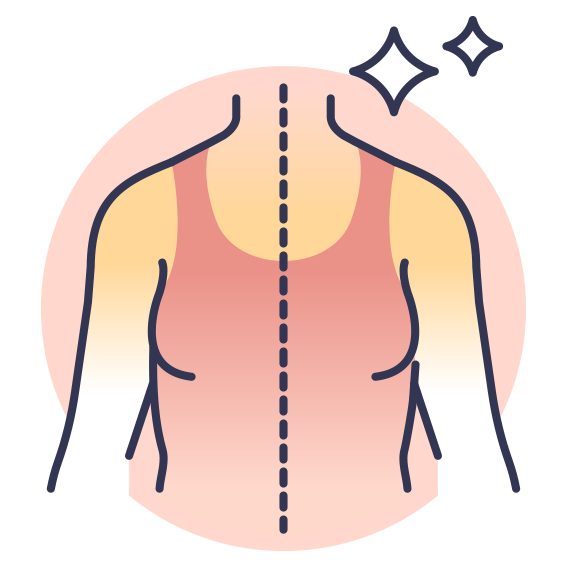
Symmetrical Symptoms
Rheumatoid arthritis has a pretty classic presentation, and we look for those patterns when we’re making a diagnosis. Typically, it’s going to involve both sides. Sometimes one side is worse than the other, but we tend to see symmetric involvement.
If two knuckles are involved on one hand, they should also be involved on the other hand, whereas other types of arthritis may move around or have one or two joints involved, or one side that’s significantly more affected than the other.
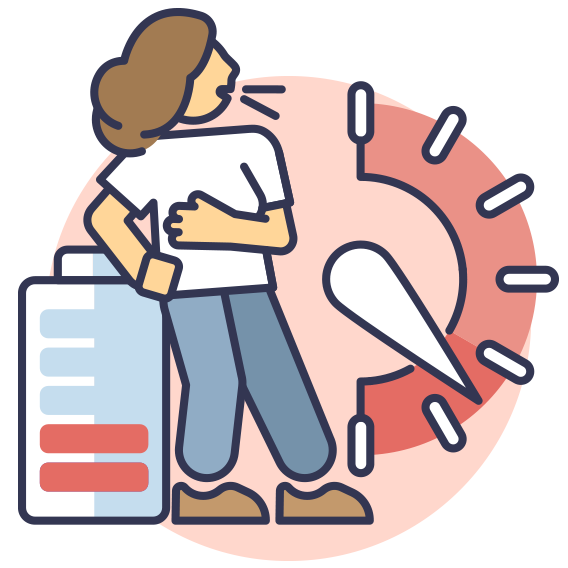
Whole-Body Symptoms
Rheumatoid arthritis is a systemic autoimmune disease, meaning it is a disease of the whole body. When your immune system is not functioning appropriately, you can develop what we call “constitutional symptoms”—things like running a fever for no good reason.
Other symptoms may include losing weight rapidly or feeling generally sick and ill. Fatigue is a very common symptom as well. Fatigue can occur in a lot of scenarios outside of autoimmune disease, but it is a common symptom with rheumatoid and similar diseases.
↑ Back to Top
Q: What is a “flare?”
↑ Back to TopA flare is essentially a sudden increase in inflammation, and that’s usually reflected by a sudden increase in your joint symptoms such as pain, stiffness, and swelling. In rheumatoid arthritis, an excessive number of inflammatory cells rush into your joints during a flare.
To diagnose a flare, I want to look at and feel the joints, talk about your symptoms, and we’ll often do blood tests for what we call inflammatory markers.
Sometimes we see patients come in who feel like they may be having a flare, but they’re not swollen—just more achy than normal. This is where checking the inflammatory markers in your blood can help us tell if you are truly experiencing a flare of inflammation. An increase in achy pain can occur without excessive inflammation, for example if you’ve been more active than usual. It can even occur with changes in the weather, especially with large shifts in the barometric pressure associated with cold fronts, storms, or rain. A sudden increase in aches and pains may or may not be a true flare of rheumatoid arthritis. Often this is simply arthralgia, which is a temporary increase in achy pain of the joints, but it is important to see your rheumatologist to help differentiate this.
Q: What is the process of getting a rheumatoid arthritis diagnosis?
First and foremost—pay attention to your body. If something is new, different, not right, and it keeps going, you want to get that looked at. Start with your primary care doctor to talk about your symptoms.
We look for symptoms that are persistent—bothersome every day for greater than a couple of months. A lot of things can cause joint pain, such as injuries and even infections. Viral illnesses can cause you to have transient arthritis for several days or even several weeks.
If your symptoms are gradually worsening and not going away over several weeks or longer, you should have this investigated further. Your primary care provider can help do the initial assessment of your joints and symptoms and help monitor them over time to determine if any red flags are popping up that may then indicate a referral to rheumatology.

Rheumatology Body Exam
Your symptoms and what your joints look and feel like are the most important part of the puzzle. Then we determine if those patterns and symptoms match up with what is typical for rheumatoid.

Rheumatology Lab Work
There are tests for autoantibodies, which are antibodies created by the immune system that can potentially attack your normal tissues, that can be present in rheumatoid arthritis. The most common rheumatoid arthritis autoantibodies we look at include:
– CCP Antibody Test: one of the more specific and higher risk labs for rheumatoid arthritis.
– Rheumatoid Factor: much less specific and can be seen in healthy patients.
If you have one or both or more of those auto-antibody tests, you’re at a higher risk of having a more severe form of rheumatoid arthritis. However, they are not the final diagnosis and don’t mean that you have disease. If we see the right symptoms with those elevated antibodies, we’re going to put that together and make that clinical diagnosis.

Rheumatology Imaging
Whether or not we take imaging is on a case-by-case basis depending on symptoms, the severity of those symptoms, and what your joints look like.
If your symptoms just started two or three months ago, that’s usually not long enough for rheumatoid arthritis to cause damage that would show up on an x-ray. Sometimes it can take several months to years to create those changes within the bone.
For a longer duration of symptoms, such as several months or years, I’m probably going to get some x-rays of your most bothersome joint areas to start. We’ll take a closer look at the joint space to see if there are any signs of rheumatoid-related damage.
X-rays can also help rule out other issues that could be causing symptoms. Sometimes we find an injury. For example, if someone has a swollen wrist, they may have a fracture that they were not aware of.
Imaging is helpful most of the time, but not all the time. I tell patients not to be discouraged if they do not get an x-ray on their first visit. Sometimes we look at a lot of other stuff first, and then we make the decision for imaging based on whether it will help us make a diagnosis or treatment plan.
Don’t have a Primary Care Provider?
Q: What conditions are commonly mistaken for rheumatoid arthritis?
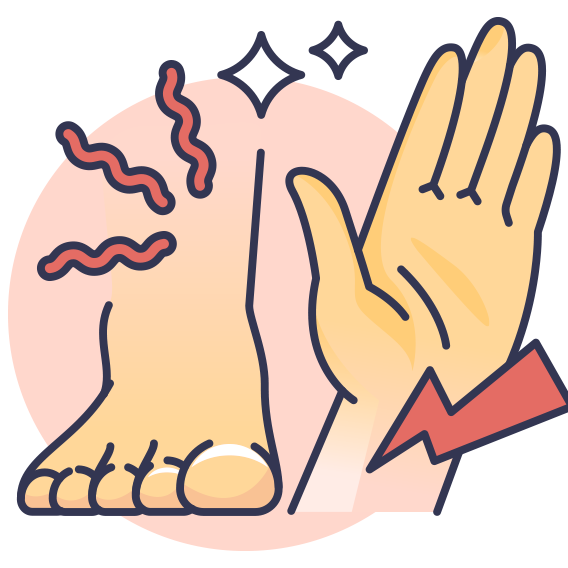
Osteoarthritis
Osteoarthritis is the most common type of arthritis in the world. We all get wear and tear to our joints to some degree as humans throughout our lifetime, especially as we get older. Depending on where you’re having symptoms, it can be mixed up with rheumatoid arthritis. Getting a detailed history of your symptoms, seeing what your joints look like, and x-rays can help us tell those apart.
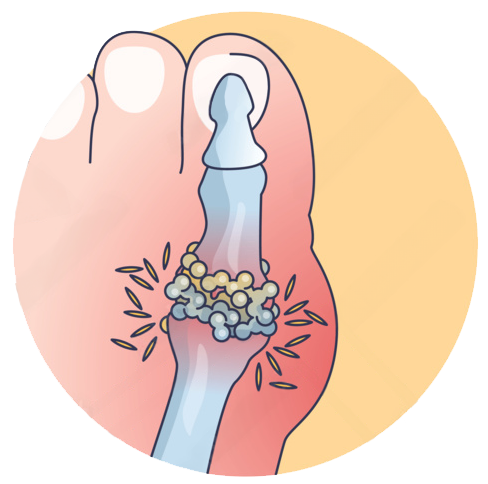
Gout
Another category of inflammatory arthritis is called crystalline arthropathies—gout and pseudogout—that is very common and can occur in almost any joint in the body. When they flare up in the fingers or in the wrist, smaller joints, they can sometimes mimic what we typically look for in rheumatoid arthritis. Our lab tests and x-rays also help us tell those apart.
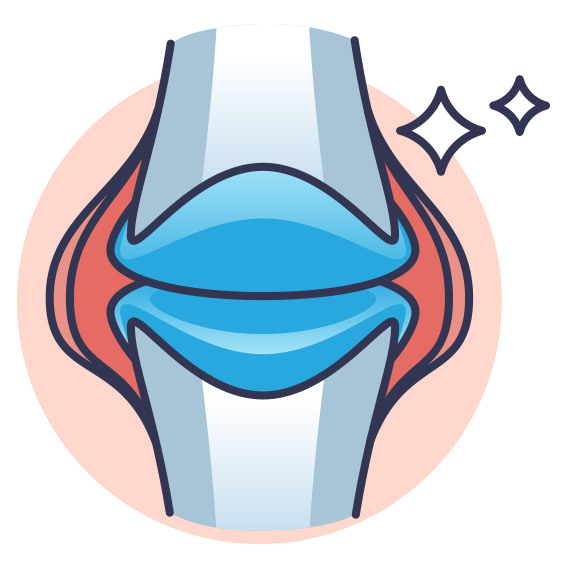
Other Types of Arthritis
Other types of inflammatory arthritis like psoriatic arthritis, ankylosing spondylitis, and some other autoimmune conditions that we see and treat in rheumatology can sometimes overlap symptoms with rheumatoid arthritis. Again, that’s where our antibody tests will help tease out if your inflammatory looking symptoms are leaning more towards rheumatoid arthritis-type of testing or something else.
↑ Back to Top
Q: What increases your risk of developing rheumatoid arthritis?

Smoking & Poor Dental Hygiene
For risk factors that you can control, studies have shown two things proven to dramatically increase risk specifically for rheumatoid arthritis: smoking and poor dental hygiene.
Everybody knows that smoking is bad for your lungs, for your heart—for a lot of things—but it does exceedingly increase your risk for rheumatoid arthritis.
It’s thought that if you have poor dental hygiene, a lot of cavities, and gingivitis that the increased bacterial load in the mouth revs up the immune system more than it needs to be, which in turn makes room for more errors in the immune cells, potentially leading to mistakes that trigger autoimmune diseases. Thus far, the only link we’ve proven is rheumatoid, but it could be a risk factor for almost any autoimmune disease.

Genetics
One of the biggest risk factors is just your genetics. If there’s rheumatoid arthritis or even other autoimmune disease in your family somewhere, then you’ve got a genetic risk for autoimmune diseases in general. I’ve seen families where the grandmother has psoriatic arthritis, and then mom has something like lupus, and then the daughter has rheumatoid. So, it could be different types of autoimmune disease, but that autoimmunity overall is what can genetically run through families, and sometimes it skips two or even three generations.
Q: Can young people get rheumatoid arthritis?
↑ Back to TopAutoimmune arthritis can occur at any age. There’s no cutoff. Inflammatory arthritis can occur in small children and teenagers. I’ve diagnosed patients in their nineties. I have patients in their twenties, thirties, and up. No age is off limits.
Q: What are the main treatment options for rheumatoid arthritis?
Over the last couple of decades, multiple new medications have been developed and approved. We have a lot of treatment options for rheumatoid arthritis.

Steroids
First and foremost, if you’re newly diagnosed with rheumatoid arthritis, one of the first treatments is going to be steroids—something like prednisone. That’s just about the only medication that’s going to work rapidly to settle down your inflammation and get you feeling better quickly.
Steroids are not a long-term solution. Our ultimate goal is to get you on maintenance therapy and off of steroids sooner rather than later. Steroids come with a long list of side effects, and that risk just goes up and up the longer you take them.
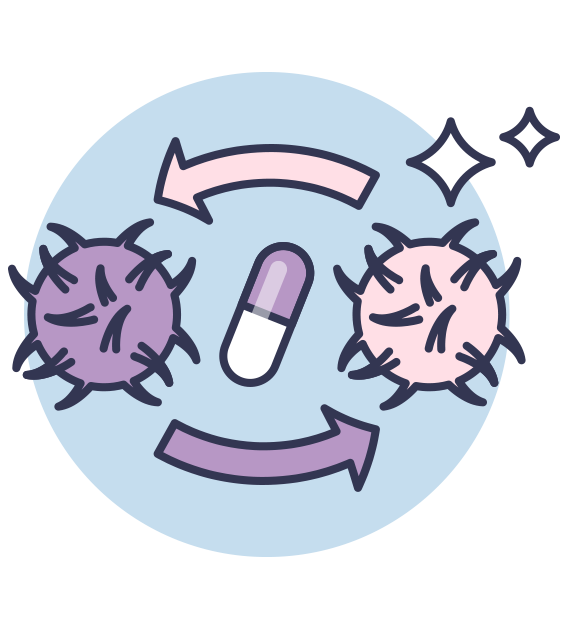
Disease-Modifying Anti-Rheumatic Drugs (DMARDs)
Disease-modifying anti-rheumatic drugs (DMARDs) are our first class of therapies for rheumatoid arthritis. This includes medications like methotrexate, hydroxychloroquine, leflunomide, sulfasalazine. These medications are used for a lot of different autoimmune diseases and all work decently well for rheumatoid arthritis.
The standard first line treatment is usually methotrexate. We will avoid methotrexate in certain situations such as young females planning pregnancy or at risk of pregnancy, but if you don’t have a contraindication to methotrexate, that’s probably going to be the first thing you get put on when you’re diagnosed with rheumatoid arthritis. Methotrexate has been shown to work very well and has been around for decades. While there are some side effects we watch very closely for, most patients tolerate it well.
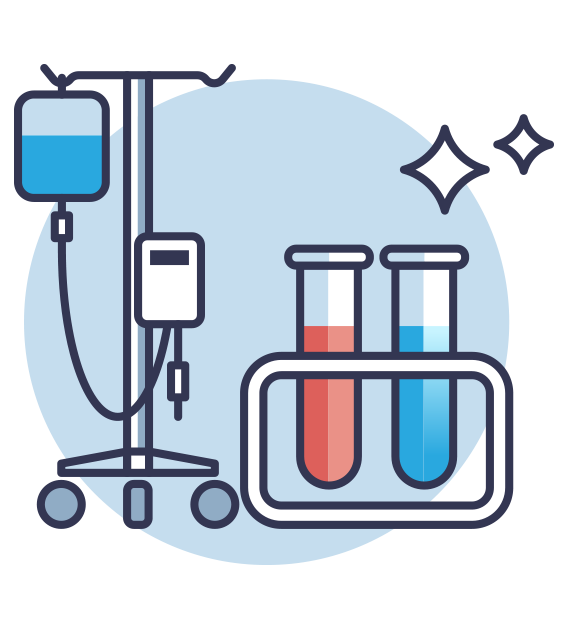
Biologic Therapies
If we’re just not seeing improvement with DMARDs, we may take the next step up and use what we call biologic therapies. Biologic therapies have exploded in the last decade, not only in rheumatology but across medicine in general.
Some of our oldest biologics in rheumatology are what we call TNF inhibitors, and even if you don’t know what these are, I assure you that you’ve seen a commercial on TV for things like Humira and Enbrel.
Biologic therapies are very, very expensive, so when we’re choosing a biologic therapy, we’re heavily reliant on your insurance coverage. Some insurance companies dictate which ones they’ll pay for and which ones they won’t. That can really hinder our decision making because maybe I want you on a specific drug for a certain reason, but your insurance only wants to pay for a different one.
↑ Back to TopThere are a ton of medications, and it’s a conversation to have with your doctor to determine which of them is best for you. And if one doesn’t work, we can try another. We also may have to switch them up sometimes if one stops working or if side effects develop.
Q: Is medical cannabis approved for rheumatoid arthritis?
Medical cannabis is approved for ongoing pain. We don’t have any data that shows it’s really a treatment for rheumatoid arthritis. However, it can be an adjunctive therapy with DMARDs and biologics. If your inflammation and rheumatoid arthritis are controlled, and you’re still experiencing joint pain, medical cannabis may help. I have several patients who utilize it to help with their pain.
We do not provide it in rheumatology, but there are some great primary care doctors in our community who are offering that service for patients. It works incredibly well for certain patients, but not everyone’s going to like it or respond to it well. I have seen it make a huge difference in some people’s lives.
Q: Do you recommend an anti-inflammatory diet for rheumatoid arthritis patients?
↑ Back to TopThere’s not one right or wrong diet to follow. Inflammation can be triggered from stress, trauma, injuries, you name it. There’s a long list of things that play into that there.
I do generally recommend an anti-inflammatory or “arthritis” diet, which most closely resembles a Mediterranean diet, to my patients. I’m not very strict with it. I don’t have patients write things down and keep a food journal—I leave that up to the individual.
I have some patients who will follow it very strictly and they don’t feel much of a difference than whatever their baseline way of eating was. But on the other side, similar to trying things like medical cannabis, I’ve had some patients who start making those dietary changes and following more of that anti-inflammatory diet, and they see it make a huge difference.
The Arthritis Foundation has detailed articles on diet recommendations where you can read through what foods are more likely to rev up inflammation or help settle it down. That can even be beneficial for patients who don’t have rheumatoid arthritis. I’ve seen it make a difference in osteoarthritis in some cases, even though that’s not an inflammatory disease in the same sense that rheumatoid is.
Q: What happens if rheumatoid arthritis is not treated?
Untreated, uncontrolled rheumatoid arthritis is different for every patient because it depends on how severe your disease is and how rapidly it is progressing.
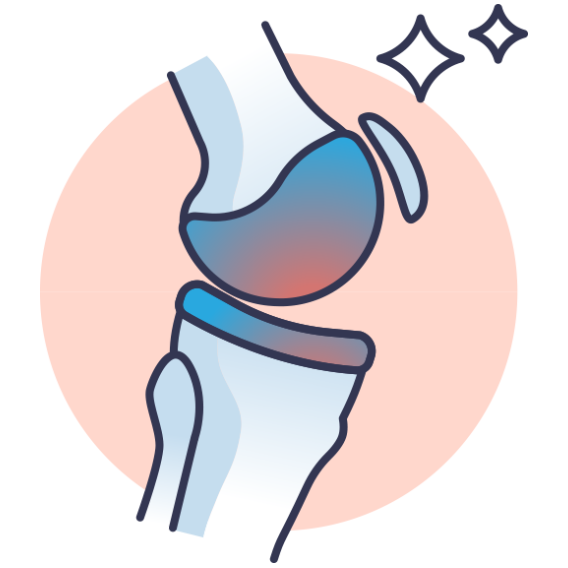
Erosive Joint Damage & Joint Deformities
If rheumatoid arthritis is undiagnosed and untreated for a long time, that rheumatoid inflammation can eat away at your joints. It can cause what we call erosive damage to the joint. If you’re looking at an X-ray, instead of the bone with a smooth surface, it looks like a rat has taken some bites out, and that is irreversible.
As that damage escalates, you can develop joint deformities. The joints can become permanently enlarged. They can start to turn, twist or bend. In some of the worst-case scenarios, the patient’s hands become extremely gnarled, and they’re not able to straighten or use their fingers any longer.
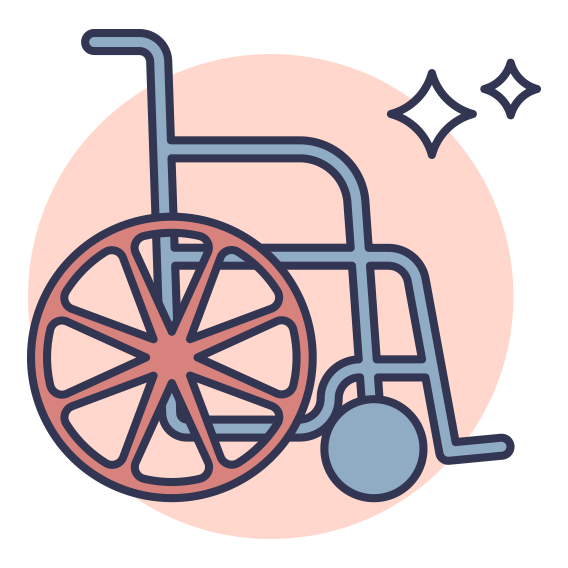
Disability
Again, rheumatoid arthritis can affect more than just the hands and the wrists. I’ve seen really terrible rheumatoid damage in the elbows, in the shoulders, and the toes. In someone who has multiple joints involved, if all those joint areas become severely deformed then you will have extreme difficulty with being able to function and can become physically disabled. So, we want to catch it as early as possible and prevent that from happening.
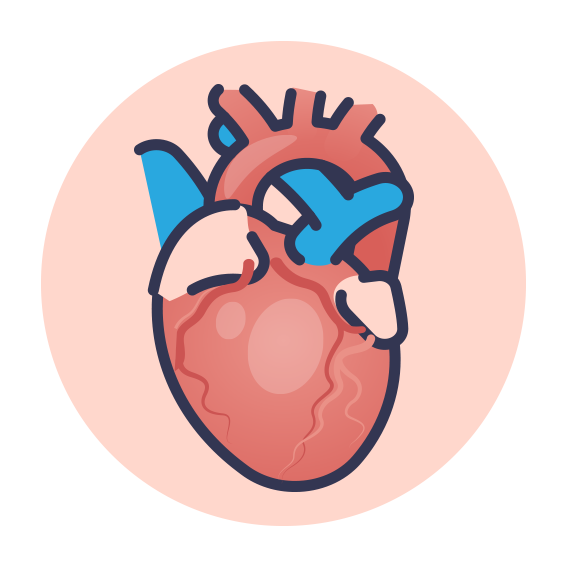
Cardiovascular Disease
Uncontrolled rheumatoid arthritis drastically increases your risk for cardiovascular disease. Rheumatoid arthritis patients can have heart attacks and strokes at very young ages if their disease is not controlled, even if they don’t have big risk factors like diabetes or high cholesterol. Rheumatoid inflammation affects everything. And so again, we want to get it controlled early, not only to protect the joints, but to protect your heart.
Q: Can someone with rheumatoid arthritis achieve remission?
↑ Back to TopRemission is achievable, but it looks different from person to person.
Some of my best-case scenarios have been patients starting a DMARD such as methotrexate and four months later their symptoms are completely gone. However, while that is possible, I would not say it’s a realistic goal for everyone. Sometimes it takes several months and rarely even years to try different medications and figure out exactly what works for you.
Rheumatoid Arthritis is different for every person. The goal is to have you on a stable treatment regimen where your symptoms are controlled and maintained over time—no swelling, minimal stiffness, minimal pain, and no signs of active inflammation in your labs.
Once you achieve clinical remission and your symptoms are essentially gone, we continue your medication because the risk is that if you come off your medication, it could come right back.
It’s like once you have high blood pressure, you go on that blood pressure pill, it brings your numbers down, but if you stop taking your blood pressure medicine, it’s going to go back up again. Rheumatoid arthritis is similar.
Again, it’s different for every patient. I have had some cases where the patient has been in remission and well controlled for several years, and we decide to wean off medication and monitor closely, and some people are able to do that, and we don’t see the disease come back. Now in some cases, I’ve seen it flare up six months later. In some cases, I’ve seen it flare up 10 years later.
Q: How does rheumatoid arthritis affect your mental health?
Mental health is extremely important. It really affects everything when you’re not in a good head space, and this is not unique to rheumatoid arthritis. We see this with any chronic disease like new onset hypertension and new onset diabetes.

Stress of a New Diagnosis
It has been shown that a new chronic disease diagnosis can really take a toll on you mentally. Suddenly you may be on medication and have doctor visits and need labs drawn—it’s lot of stress to go through.

Importance of Support Systems
It’s important to find your support system—if it’s somebody at home, your spouse, a family friend, a coworker, somebody that you can talk to, especially with autoimmune disease like rheumatoid arthritis. There are a lot of online groups and support resources where you can talk about your experience and what you’re going through with other people who have the same disease.
However, I caution my patients to not take medical advice from those support groups—talk to your doctor.

Lean On Your Rheumatologist
I encourage patients to take it one day at a time and to call us if they need us. I try to see patients back a little sooner and more frequently when we’re first establishing our treatment plan—not only to make sure we’re heading in the right direction and seeing improvement with our treatment, but to make sure they’re handling it okay. If you have no one else to talk to about your rheumatoid arthritis, your rheumatologist is there.
We are the experts in rheumatoid arthritis. We see it and treat it all day long, every day. And while every patient’s experience is going to be unique to them, there are similarities. And so, if your friend with rheumatoid arthritis is not going through the same thing you’re going through, make an appointment with your rheumatologist and come talk to us about it.
There are also medications that are used for pain that can also help depression. For example, a very common antidepressant called Cymbalta is also approved for arthritis pain. It’s not a rheumatoid-specific treatment, but there have been some links there, and if we can treat that component, it can make you feel better and help you cope with things a little bit better.
While not everyone needs antidepressants, take the steps to take care of yourself:
– Listen to your body and what you need
– Ask for what you need
– Find your support system
– Come to all your follow-up visits to keep your disease on track and well controlled
If we get you to that point where you’re feeling better, your rheumatoid arthritis is better controlled, and the inflammation is settled down, it will make the stress of a huge lifestyle change, more doctor visits, and daily medication more manageable long-term.
↑ Back to Top
Q: How important is exercise for rheumatoid arthritis patients? What types of exercises are most beneficial?
Exercise is incredibly important. I try to reassure my patients that it does not have to be anything intense. I’m not asking you to do CrossFit for an hour every day. It can be very mild, very low impact, gentle exercise to maintain strength and function of the joints over time.
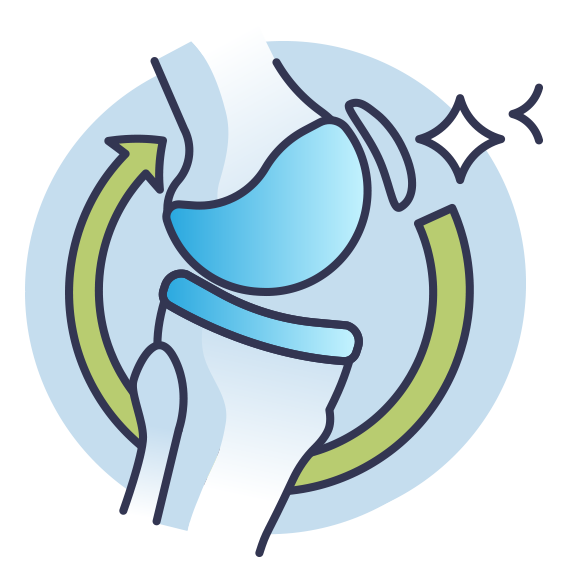
Joint Maintenance
Over time, the more you sit still, joints become less lubricated and less flexible, and you’re going to have more difficulty with daily activities. It could be something as simple as reaching up to wash your hair in the shower, reaching up to get something out of a cabinet, or pulling up a bag from the floor.

Physical Therapy
I frequently recommend getting set up with physical therapy, even if it’s just for a few visits.
A physical therapist can work with that individual patient on what areas need the most focus on strengthening. They can teach the patient safe exercises, how to do it appropriately without injuring themselves, and then the patient can take that knowledge and training and continue those exercises on their own at home.
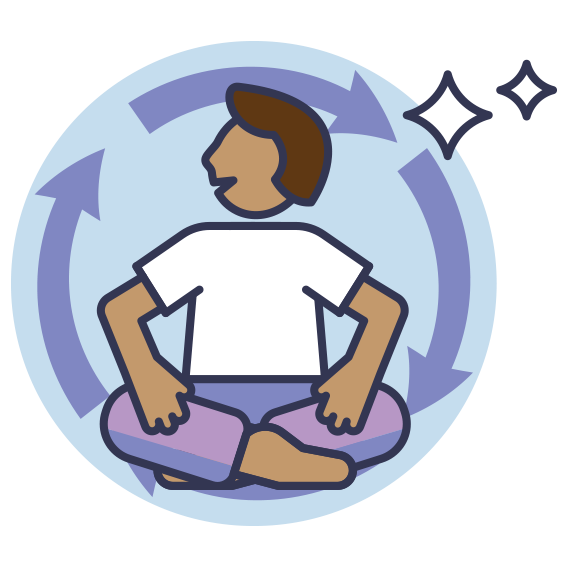
Other Benefits
Exercise is very important, not only for your joints, but for cardiovascular risks. Lifelong exercise can help decrease those risks. It’s also one of the best things you can do for your mental health. Do a physical activity, even if it’s just a five-minute walk and some stretching a little bit every day.
↑ Back to Top
Q: What resources do you recommend to patients to learn more about rheumatoid arthritis?
↑ Back to TopArthritis.org, which is the Arthritis Foundation. They have articles and slideshows on almost every type of arthritis out there, autoimmune or not.
For more information specifically regarding autoimmune diseases, the American College of Rheumatology, rheumatology.org, has a patient section on their website.
Q: What are things a rheumatoid arthritis patient can do to successfully manage their condition?

Ask Questions
I don’t want you to be afraid to complain or ask questions because if you don’t complain or tell me what you’re having trouble with, then we don’t know what we can help with. There are no “stupid questions.” Let me know what’s going on.
We may not be able to fix every little thing, but sometimes patients will bring up a complaint that they’ve been holding onto or not wanting to mention, and sometimes it’s an easy fix.

Be Honest & Communicate Issues
Honesty is the best policy.
I have some patients who, three or four visits in, will finally admit to me, “Oh, by the way, I drink x amount of alcohol every night.” They omit that information initially because they’re afraid to admit it, but that is important for physicians to know because it’s going to affect medications that we give you and what we monitor.
I don’t want my patients to be ashamed or embarrassed of any little thing. Let’s talk about it because it may impact how we’re treating you.
Medications can cause side effects, but not always. I do my best to explain possible side effects and what could go wrong, but I need the patient to tell me if there are any issues with their medication. Is it making you nauseous? Are you having trouble keeping up with and remembering to take your pills when they’re due? Open communication is one of the best things the patient can do for themselves and for us so that we can have them treated the most adequately.

Do Your Part
Take your medications. Sometimes we have a patient come back for a three-month follow-up visit and they’re like, “Oh, by the way, I have not been taking my medications. I just haven’t felt like it, or I didn’t go pick it up.”
As your rheumatologist, I can make recommendations, write prescriptions, explain the why behind what we’re doing, but we are only part of the team – the patient is the other important team player when it comes to treating any disease process. We can’t always help you get better unless you’re doing your part as well.
That even includes things like exercising, quitting smoking, and cutting back on alcohol use. Everyone needs to take that ownership of their own health and take care of themselves.
Treatment plans are often more effective long term when a patient comes in ready to take care of and advocate for themselves and have open communication so that we can realistically develop a good plan to treat your rheumatoid arthritis or whatever disease it may be.
↑ Back to Top
Take care of yourself! Manage your rheumatoid arthritis or other autoimmune disease symptoms by developing a relationship with a qualified rheumatologist. Have your primary care provider make you a referral to Singing River Rheumatology.

